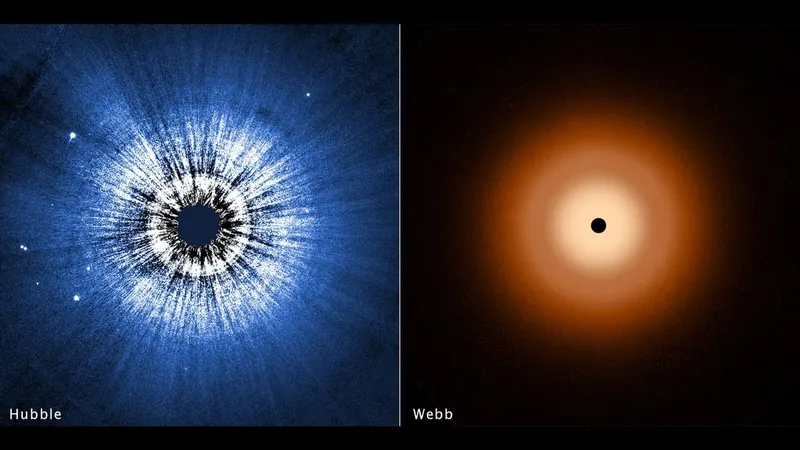
The Mystifying Case of Vega: Why Are There No Planets Around This Bright Star?
2024-11-05
Author: Daniel
The Absence of Planets
Astronomers are buzzing with intrigue following new findings from the Hubble Space Telescope and the James Webb Space Telescope (JWST) about Vega, one of the brightest stars in our night sky. These observations reveal a striking absence of planets surrounding this young star, a discovery that challenges existing theories in planetary formation.
The Dusty Disk of Vega
Vega has captured the imagination of scientists for decades. In the iconic 1997 film 'Contact,' Jodie Foster's character travels to Vega and encounters a cloud of dust but no visible planets—a scene that seemingly mirrors the reality uncovered by modern telescopes. Although Vega's dusty disk surrounds the star, it lacks the rich structure you would expect from a planet-forming environment. The findings show a featureless dust disk devoid of distinct rings—an anomaly compared to other young stars.
Observations and Findings
Researchers conducted extensive observations, successfully ruling out the presence of giant planets larger than Neptune. However, questions linger regarding the existence of smaller worlds, such as super-Earths or Earth-like planets. Kate Su from the University of Arizona, who led the JWST observations, noted, "It’s making us rethink the range and variety among exoplanet systems." Vega, located just 25 light-years from Earth, is an ideal candidate for study due to its proximity and face-on orientation of the dust disk.


 Brasil (PT)
Brasil (PT)
 Canada (EN)
Canada (EN)
 Chile (ES)
Chile (ES)
 España (ES)
España (ES)
 France (FR)
France (FR)
 Hong Kong (EN)
Hong Kong (EN)
 Italia (IT)
Italia (IT)
 日本 (JA)
日本 (JA)
 Magyarország (HU)
Magyarország (HU)
 Norge (NO)
Norge (NO)
 Polska (PL)
Polska (PL)
 Schweiz (DE)
Schweiz (DE)
 Singapore (EN)
Singapore (EN)
 Sverige (SV)
Sverige (SV)
 Suomi (FI)
Suomi (FI)
 Türkiye (TR)
Türkiye (TR)